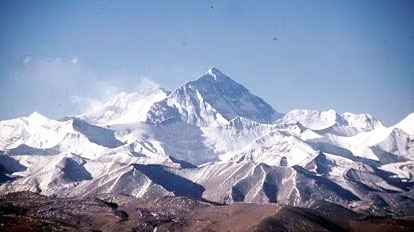Kathmandu, Mar 1
As many as 30 women, including a beauty queen, from across Nepal will assemble at the base camp of Mount Everest on March 8 on International Women’s Day to draw attention to the alarming melting of snow in the Himalayas due to climate change and its impact on local communities.
On Thursday, the women, including politicians, were flagged off from here by Sath Sathai, an organisation campaigning for the agenda of climate change and women’s empowerment.
The theme of this year’s International Women’s Day is ‘Invest in Women: Accelerate Progress’.
The women would travel from Kathmandu to Manthali for a night halt and on Friday, would start from Manthali to Lukla, a small hill town that has the airport nearest to the Mt Everest base camp.
The women would then walk for five days to reach on March 8 the place Kalapatthar, which is at an altitude of 5,500 metres and is close to the Mt Everest base camp.
“We are heading towards Kalapatthar to raise global awareness regarding the alarming issue of climate change,” Prajeeta Karki, president of Sathi Sathai told PTI over the phone.
The team includes Miss Nepal World Srichchha Pradhan, social activists, medical personnel, politicians, women activists and even journalists among others.
The special gathering at Kalapatthar on the occasion of March 8, is aimed at drawing the attention of national and international communities to the devastating consequences of climate change in the Everest region and the challenges being faced by the mountain people, Karki said.
These women from different walks of life are scheduled to march in the Everest region to voice their concern for climate change by organising a rally and interacting with the villages in the Everest region. “During the march, we would interact with the people’s representatives and the community members along the route and discuss how climate change is impacting them,” Karki added.
A 2023 report by the inter-governmental body, the International Centre for Integrated Mountain Development (ICIMOD) has pointed out that 79 glaciers surrounding Mount Everest have thinned by over 100 metres in just six decades, and the thinning rate has nearly doubled since 2009, majorly due to the changing climate.
Loss of snow can lead to less meltwater in the rivers originating from the glaciers and can harm the mountain communities dependent on them as well as those in the downstream plains.
Home News International All-women Nepali team near Mt Everest base camp to draw attention towards...



























